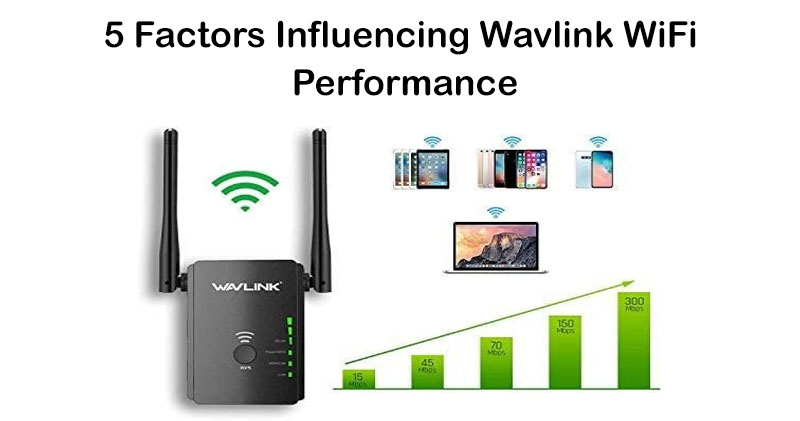Wavlink WiFi may be temperamental. If you have a completely strong Wavlink WiFi connection, take a few steps in one direction and carefully read all of the instructions!
Choose a Good Location for Your Router
Not every location is ideal for your router. To begin, you should avoid positioning your router near metal items or equipment that create electromagnetic radiation. Metal is the most powerful signal disruptor, and its presence near a WiFi router may quickly produce a big dead zone.
Other materials, such as glass, wood, plastics, foam, and cardboard, may also interfere with a Wavlink WiFi signal, although their impact on Wavlink WiFi signal strength is usually less severe.
Keep in mind that many buildings utilize metal studs (rather than 2×4 wood) for particle board installation, so positioning your router near them is not a good idea. When in doubt, utilize a portable stud finder or a smartphone stud finder app.
To some extent, all home equipment generate electromagnetic waves, including fluorescent light bulbs, circuit breakers, and electric razors. Stoves, microwave ovens, and dishwashers are among the main producers of electromagnetic radiation in the kitchen.
Washing machines, tumble dryers, TVs, cordless phones, and radiant heaters are also hazardous. If you have any of these devices in your house, keep your Wavlink WiFi router as far away from them as possible to improve Wavlink WiFi signal.
You should also remain a safe distance from electric lines. To get an equal Wavlink WiFi signal over a large area, position your Wavlink WiFi router approximately in the middle. By raising the router above the floor level, you may somewhat improve your wireless signal.
Wavlink WiFi signals spread in all directions and not just horizontally. When your router is on the floor, it loses its capacity to send out powerful signals.
For the same reason, residents in multi-story homes should keep a WiFi router near the ceiling on the first level. This ensures that even the second story receives regular coverage.
Maintain Your Wavlink Router
If you read the news, you’ve probably heard about the increasing number of large-scale malware attacks that cost organisations and people billions of dollars each year. Many of these assaults would be impossible to carry out if all routers were maintained up to date. When malware enters a router, it may steal bandwidth and propagate to other devices on the network.
Even in the absence of malicious virus, routers with outdated firmware perform worse than routers that have been properly updated.
Choose either Firmware Update or Router Update.
Because there are so many routers available, you may need to do some searching and detective work to discover the best one.
Wait for your router to discover and install the most recent firmware.
Never pause the update. If it takes a long time and your router seems to be unresponsive, wait a few minutes before disconnecting and reconnecting the router.
Disconnect Wavlink WiFi Leeches
In this day and age, an encrypted, password-protected WiFi network is a requirement. With more people than ever depending on Wavlink WiFi, there is a genuine need for open, fast Wavlink WiFi networks. Don’t assume that since your neighbors have their own Wavlink WiFi network, they won’t use yours – they will.
You should encrypt your WiFi and safeguard it with a strong, difficult-to-guess password. A strong password should include:
If you have a lot of visitors, setup a separate guest network and either severely restrict its range or safeguard it with a different password that you update on a regular basis.
Change to a New Wavlink WiFi Channel
There are several WiFi channels that a WiFi router may transmit on, much as there are lanes on the highway. Despite the fact that most nations offer six non-overlapping channels (1, 6, 11, and 14), many customers keep their router on the default channel, which is often Channel 1 or Channel 6.
As a consequence of too many packets attempting to drive on the same line, this causes a WiFi traffic congestion.
The answer is straightforward: determine which channel has the fewest users and switch to it. This is possible using NetSpot, a professional and user-friendly WiFi analysis and monitoring application.
After you’ve chosen a new channel, you must instruct your WiFi router to utilize it:
Purchase a Wavlink WiFi Repeater/Booster/Extender
Wavlink WiFi boosters, repeaters, and extenders are all effectively the same thing, despite their many names.
Wavlink WiFi repeaters are simple devices that rebroadcast an existing signal from your WiFi router as a new network. This new network is just an extension of your primary network, and any data passing through it also passes via the primary network.
Wavlink WiFi extenders and boosters are quite similar in that they both magnify the current signal before rebroadcasting it to form a second network. Wavlink WiFi boosters make sense in instances when the initial signal is extremely weak since they often have a longer range than Wavlink WiFi repeaters.
A excellent repeater or booster costs less than $100 and can be setup in a few minutes by anybody since the installation procedure generally consists of merely pressing the WPS button.
To get the maximum performance out of a WiFi repeater or booster, utilize a Wavlink WiFi booster software to assess current Wavlink WiFi coverage and find the best approach to expand the existing WiFi network.

